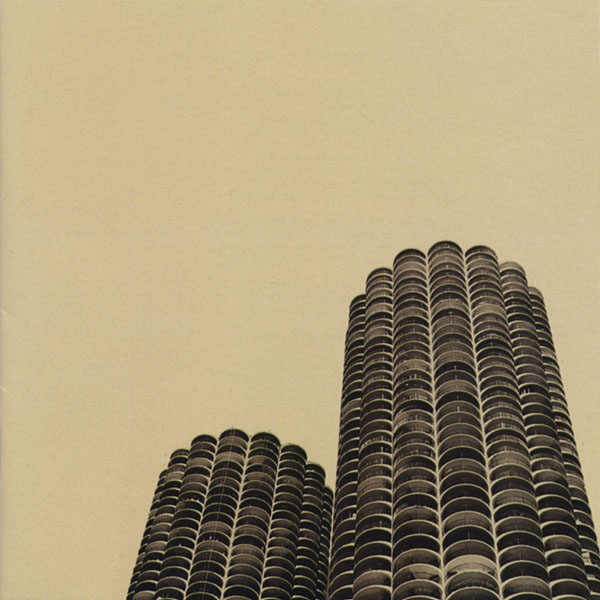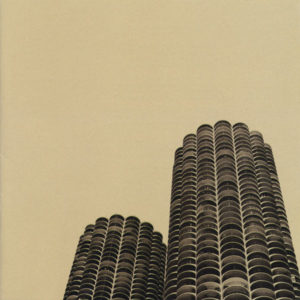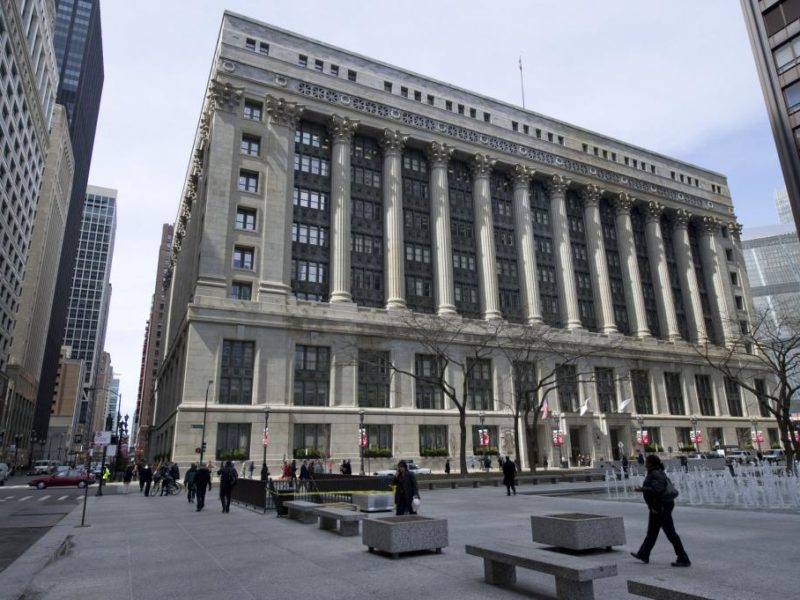
Tuesday Trivia: Chicago’s Storied Architectural History
Welcome to Tuesday Trivia! Each week, we tackle this big, bizarre, wonderful city through a different lens, asking you to answer the tough questions. This week we’re honoring our fair metropolis’s skyscrapers and buildings by quizzing you about Chicago’s storied architectural history (we just can’t resist a pun!).

These buildings are famous for more than being on the cover of a Wilco album! Check out question 7 to learn more. Photo credit www.musicbanter.com
1. Who or what gave the Willis Tower its name?
a. Wesley Willis, beloved local outsider artist and musician
b. An insurance brokerage firm
c. Bruce Willis, for his work in Die Hard, which is set in a skyscraper
d. None of the above. Sears Tower forever!
Answer: B. Even though for many Chicagoans Willis Tower feels weird on the tongue, the former Sears Tower is currently named after the Willis Group, a London-based insurance company. We would also like to believe that the building pays homage to the Willises Wesley and Bruce, as well.
2. What style is Frank Lloyd Wright known for?
a. Prairie School
b. New Objectivity
c. Brutalism
d. Functionalism
Answer: A. Frank Lloyd Wright, who lived and worked in Oak Park, was a leading figure in the Prairie School movement in architecture. The Prairie School style is known for its integration with the natural landscape, quality workmanship, solid construction and an emphasis on horizontal lines.
3. Where did Mies Van der Rohe teach?
a. School of the Art Institute of Chicago (SAIC)
b. University of Chicago
c. University of Illinois at Chicago (UIC)
d. Illinois Institute of Technology (IIT)
Answer: D. After leaving Germany in 1938, Mies Van der Rohe took a position as the head of the architecture department at Chicago’s Armour Institute of Technology, later renamed the Illinois Institute of Technology. As a job perk, he was commissioned to design the new buildings for the campus, all of which are still standing.
4. The Carbide and Carbon building, now home to the Hard Rock Hotel, is an example of Art Deco architecture. But it is also famous because of its resemblance to which luxury item?
a. Bottle of gin
b. Gold-topped cane
c. Champagne bottle
d. Princess-cut diamond ring
Answer: C. Legend has it that the Burnham Brothers designed the building to look like a champagne bottle, complete with gold leaf on the top. Since 2007, the top of the building is illuminated at night, only strengthening the visual similarity between the building and a bottle of bubbly.
5. What style of house is identified with the northwest and southwest sides of the city?
a. High-rise apartments
b. Bungalows
c. Ranch-style houses
d. Brownstones
Answer: B. The area known as the “Bungalow Belt” encompasses neighborhoods like Rogers Park, Chatham, Auburn Gresham and Lincoln Square. The Chicago bungalow is so embedded in our city’s history that it even has its own preservation group, the Historic Chicago Bungalow Association.
6. Everyone knows that Merchandise Mart is gigantic. But it might even be bigger than you realized. Which of these facts is true about the enormous icon of industry?
a. It has a designated lost and found area.
b. It had its own alderman.
c. It had its own zip code.
d. It has 20 Starbucks locations, more than O’Hare International Airport.
Answer: C. Until 2008, Merchandise Mart laid claim to the entire zip code 60654.
7. What are the buildings commonly known as the Corn Cobs or “those buildings on the cover of that Wilco album” actually named?
a. Marina City
b. The Bertrand Goldberg Condos
c. Chicago Janitor’s Union Penthouse Suites
d. State Street Apartments
Answer: A. The buildings are called Marina City in reference to the small marina at the river level of the building. Bertrand Goldberg was the architect of the building but did not get to name the buildings after himself. The buildings were commissioned by the Janitor’s Union in an effort to curb white flight in the 1960s.
8. The building that now houses the Museum of Science and Industry was built for which historical event?
a. Columbian Exposition
b. Century of Progress
c. To commemorate the Great Chicago Fire
d. To commemorate Fort Dearborn
Answer: A. The building in which the Museum of Science and Industry now stands was initially built for the 1893 Columbian Exposition and was called the Palace of Fine Arts. It didn’t open its doors as the world’s first interactive museum until 1933 during the Century of Progress. A, B, C and D are historical events represented as stars on the Chicago flag.
9. How was the plan for Tribune Tower decided?
a. The editor-in-chief picked his best friend to design it.
b. An international open design contest was held.
c. The editorial board chose their favorite architects and commissioned designs from them.
d. The mayor paid his cronies to find a suitable plan.
Answer: B. In 1922, the Chicago Tribune began accepting submissions from around the world for plans for the building. The newspaper offered the first prize winner not only the honor of having their plans realized on Michigan Avenue, but also a $100,000 purse. John Mead Howells and Raymond Hood’s neo-Gothic design won out over more modern designs and remains an iconic Chicago building to this day.
Stay tuned for next week’s trivia featuring Chicago’s cinematic history!




